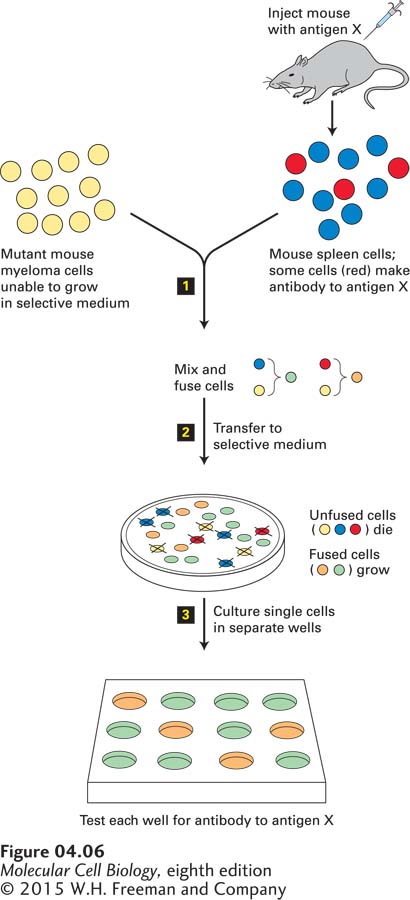
FIGURE 4- 6 Use of cell fusion and selection to obtain hybridomas producing a monoclonal antibody to a specific protein. Step 1: Immortal myeloma cells that cannot synthesize purines under special conditions because they lack thymidine kinase are fused with normal antibody- producing spleen cells from an animal that was immunized with antigen X. Step 2: When cultured in a special selective medium, unfused and self- fused cells do not grow: the myeloma cells do not grow because the selective medium does not contain purines, and the spleen cells do not grow because they have a limited life span in culture. Thus only fused cells formed from a myeloma cell and a spleen cell survive in the selective medium, proliferating into clones called hybridomas. Each hybridoma produces a single antibody. Step 3: Testing of individual clones identifies those that recognize antigen X. After a hybridoma that produces a desired antibody has been identified, the clone can be cultured to yield large amounts of that antibody.
[Leave] [Close]